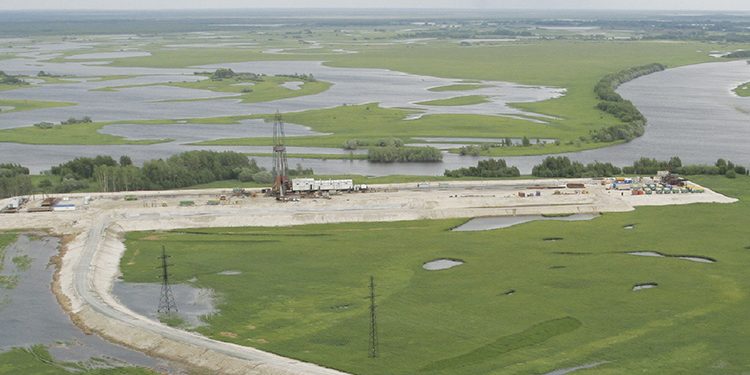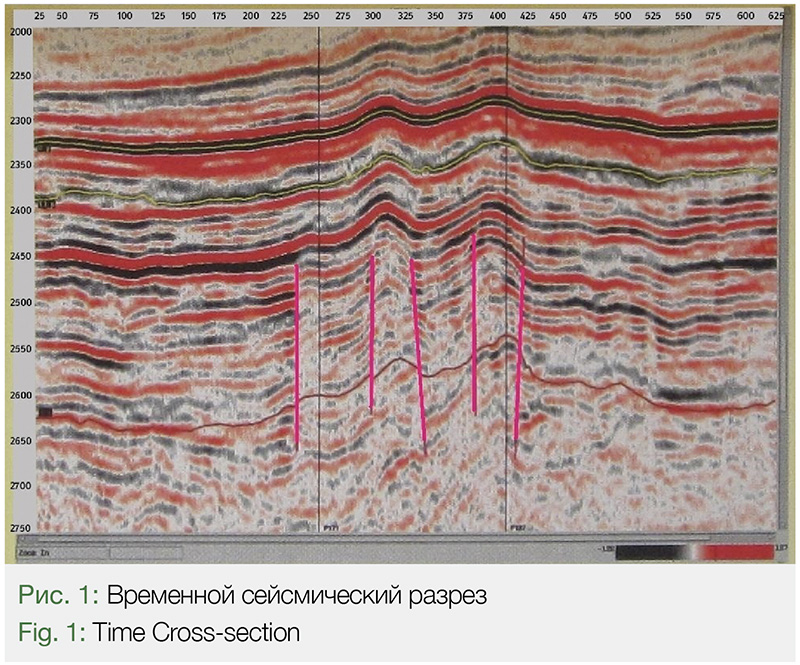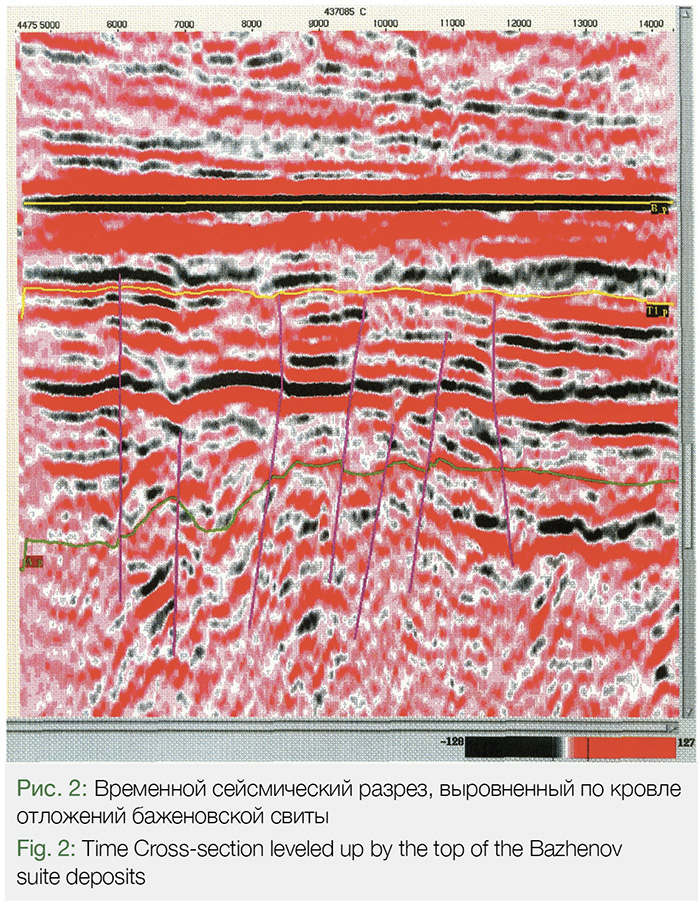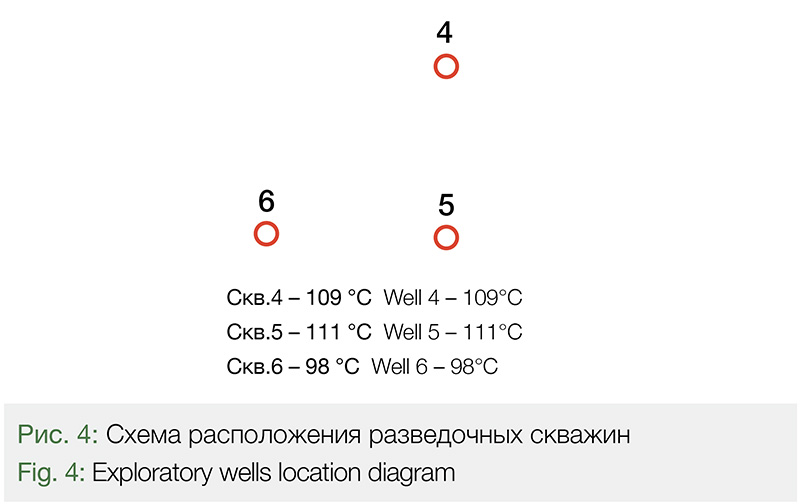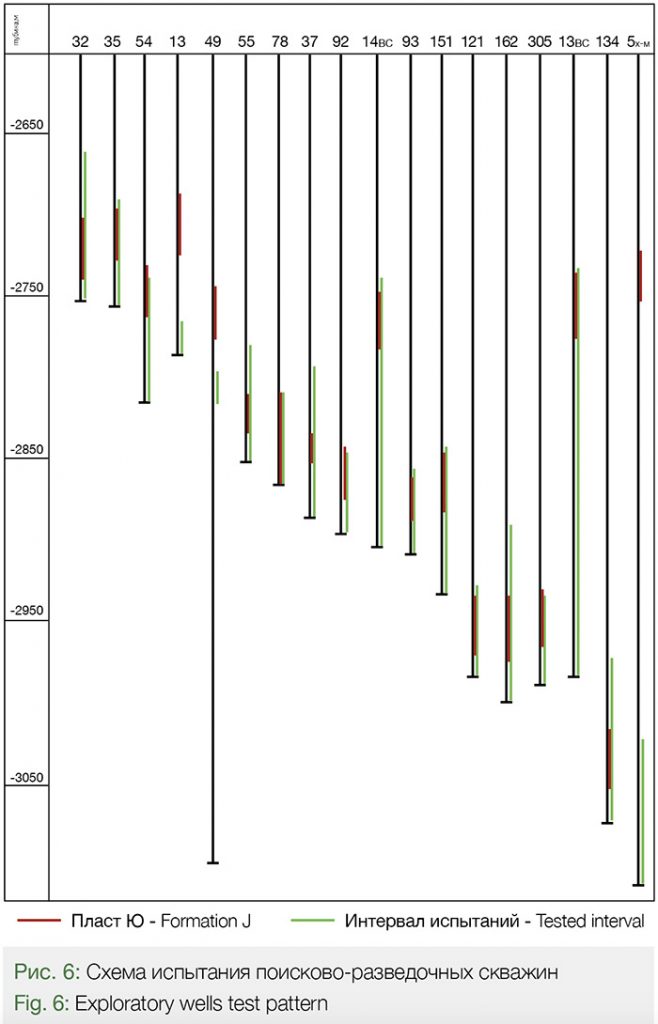Is There Actually Oil in the Bazhenov Suite?
The article’s title may trigger a hefty dose of skepticism in many readers. due to the fact that the Bazhenov Suite is considered the largest oil reserve in Russia. The efforts taken to develop this reserve are about to bare fruit and the “mystery of the century” is about to be resolved. But are there any grounds for this and what are they?
The Inferred Structure of the Target
The researchers’ views on the structure of the probable reservoir in the Bazhenov Suite deposits can largely be broken down to two models. Firstly, the reservoir is featured with alternate interlayers of various lithologies, unevenly enriched in dispersed organic matter, and the oil saturated horizontal microcavities variably associate with each other. The other model presumes the presence of porous fractured reservoirs in the Bazhenov Suite rocks.
Naturally occurring horizontal cavities can exist and percolate fluids provided that the fluid’s internal pressure exceeds the vertical pressure. Such rock states have never been registered anywhere in the world. Fractures, mentioned in various publications, were delineated by means of visual and/or instrumental observation using core samples in daylight surface conditions i.e. with the vertical pressure released. Such fissures result from irrecoverable deformation of the core when it is cut and flushed out on the surface. No evidence has been presented yet that the open fissures exist under the naturally occurring conditions of the rocks. Therefore, both models have not been properly confirmed.
Operating Companies
Four companies have been trying to recover oil out of the Bazhenov formation: Rosneft, Surgutneftegaz, LUKOIL and Gazprom Neft.
The production is pioneered by the Yuganskneft oil and gas production directorate (now, RN-Yuganskneftegaz, a Rosneft company), where separate exploration wells were used as producers since the middle of the 1970’s, and later, the company focused on production, having drilled over 70 production wells by now. The latter were drilled using the pattern which is similar to drilling the overlying chalk deposits featured with intergranular reservoir rocks. The fluid influx was either missing in the majority of the production wells or it was insignificant, economically unjustified; no well stimulation was conducted, or the reserves were developed for depletion.
Over 40 years after the start of production, understanding the target structure and the basic essence of the problem has not changed, even in a small way, as evidenced by the series of articles in the Geophysics Journal, №3, 2015. One article made a conclusion regarding the presence of 3 types of hydrocarbon reserves in the deposits of the Bazhenov Suite, which are subject to separate calculations and evaluation. No groundbreaking technologies have been demonstrated for the past period.
Surgutneftegaz is not a novice in this business. A wide-ranging program of drilling, exploration and well testing has been implemented in the company. 600 tested exploratory wells either produced no influx, or they were lower than 1m3/day. Only 36 wells (6%) yielded the oil flow rate over 10m3/day [8].
Five technologies of formation penetration were developed and tested: (1) deviated wells, using a sand screen and standard frac; (2) deviated wells with a cemented bottomhole and massive or large volume frac; (3) horizontal borehole with a minimum of overbalance pressure with sand screen plus massive frac; (4) using the underbalance pressure at the horizontal boreholes; (5) horizontal multihole wells, using both the underbalance and overbalance pressure. More than 20 various technologies were employed to increase and restore well productivity, including technologies for the creation of a wide induced fracture network. The results can be judged using a quote from the Company’s Chief Geologist (Interfax, 07.02.2014): the production from the Bazhenov Suite has increased 60% in 2013 (year on year) up to 548 MT, which brought the Company’s losses in the amount of over 3 bln rubles (the USD/Ruble exchange rate at that period was about 32 rubles/USD). There is a consistent pattern here: the higher the production is, the more disproportionally the costs increase and losses grow. With this said, the company, as well as Rosneft, has not found the solution to the problem, remaining on their level of understanding that has existing since the 1970’s.
Since 2007, the production of Bazhenov oil has been a focus of RITEK (part of LUKOIL). Their preference has been to develop thermal gas treatment solutions. The method, by itself, may have certain strengths that are attributed to it by some authors, but it did not bring any material changes in the production of Bazhenov oil.
Gazprom Neft has become another company that conceived the idea of producing oil from the Bazhenov Suite deposits. It was announced [2] that the development of the Bazhenov Suite is one of the Company’s strategic goals. By 2025 their stated plan was that: the resource base of recoverable oil reserves shall be over 400 MMT, production shall be not less than 2.5 MMT per year, cumulative production shall be over 15 MMT. The implementation of the initiatives is related to the implementation of the technology development program, and namely: the development of the technology for predicting the oil potential of Bazhenov Suite and the geohydrodynamic stimulator. Concerning the latter, it was announced that there were no analogies of this in the world, although no practical confirmations of this statement have been presented yet.
To produce oil from the Bazhenov Suite, Gazprom Neft started a project called “Building a complex of national technologies and hi tech equipment for the development of Bazhenov oil reserves” (“Bazhen”, for short) and it is open to other companies to take part in it. The project implementation period is set for 2025. It includes the development of a minimum of 15 technologies for the suite development within specific areas (equipment, technologies, software packages). Currently, nothing essential has been developed for oil recovery in the past few decades, and yet the target is to have all the problems resolved in the short term. The Ministry of Energy has denominated “Bazhen” as a federal project.
If we omit the rhetoric and the targets, the practical focus can be boiled down to constructing horizontal wells and running multistage fracks. In other words, Bazhenov Suite oil production is solved with purely technological solutions. The policy planners have, apparently, no doubts about the nature of the target.
When you start diving deeper into the companies’ plans, a certain question arises: to what extent do the planners consider the many years of challenging experiences other companies have had producing oil from the Bazhenov Suite, and are they aware of it at all?
Domestic companies have accumulated the skills of drilling horizontal and deviated wells. Drilling these boreholes in the rocks of Bazhenov Suite is possible. And this has been confirmed in practice. But after a well is constructed, one should maintain the intact stability of the drilled borehole, carry out fracs (one or multiple), keep the hydraulic fracture cracks open for a period. The practical solution to these tasks, knowing the highly plastic rocks, typical in several Bazhenov Suite lithologic rocks [3], is no easy things to do.
There is a known theoretical solution to the problem of rock stress state around the circular hole section. It demonstrates that the tangential (circular) tension in a horizontal well is going to be compressive in the medium that is subject to the theory of elasticity and with the stress tensor components being equal in a virgin rock massif. The inequality of the horizontal components determines the generation of stresses which are under tension at the top and compressive at the walls of a borehole.
With the supposed equality of horizontal components of the stress tensor in a virgin rock massif, the situation always differs from the presumed one. Experiments on fracking, using rock specimens, carried out in the laboratory of the Institut Francais du Petrole in the 1970’s, revealed that a crack is always asymmetrical and it takes place at one of the walls of a “borehole” (which was imitated using a specimen). Much later, the asymmetrical crack generation was confirmed through seismic monitoring of the hydraulic fracturing, carried out in several wells. Therefore, the horizontal components of the stress tensor are not equal in the real mine engineering conditions of rocks (with a well available). In such cases, the top of a horizontal well is the most vulnerable zone, minding the borehole stability problem.
The Bazhenov Suite rocks are, by their nature, close to the transversal isotropic medium, the properties of which are equal in a horizontal plane and different in a vertical one. Experiments using the suite rock specimen revealed that the stability of the horizontal boreholes is minimal at the top of a borehole in such mediums. The loss of stability is already probable with an underbalanced pressure of 5 to 25 atm (for instance, when drilling or inducing inflow) [3]. The theoretical and experimental assumptions have been confirmed in practice. In operations [7] evidence is provided that the uncased horizontal wellbore sections collapsed in all of the wells during the course of their operation.
The generation of a tension crack in the Bazhenov Suite requires a pressure higher than the pressure necessary for generation of a crack at a similar depth in elastobrittle rocks. Suppose, however, that a frack has been performed and a crack was generated. To maintain its permeability, it needs to be kept open after hydraulic fracturing has been completed. What is the reason for regularly pumping proppants into a crack having high physical integrity (sand, proppant)? The purpose of the agent is to withstand the pressures in the solid matrix of the elastobrittle rocks, varying in the process of oil production, and maintain the permeability of tension cracks.
The longterm impact of the varying pressures on the rock changes their stress-strain state. With the free movement of rock particles (typical of plastic rocks), the rock’s continuous deformation can be observed; which, in its turn, determines the creep flow phenomenon. No propping agent is capable of keeping the crack open under such conditions. Therefore, the chosen course for development of the Bazhenov Suite cannot provide the achievement of the set goal.
To develop the Bazhenov Suite, national companies have even tried to make alliances with the Western major companies hoping that “foreign countries can assist us”. They will not. Not because of the sanctions vetoing equipment, technologies and solutions. But because foreign countries think and reason the way our native geologists do, and they even recognize the Bazhenov Suite as the largest deposit of shale oil in the world. For instance, Salym Petroleum Development N.V. (SPD) went so far as to consider the Bazhenov Suite as an analogue of the North American Bakken formation.
All of the companies that have plans to produce oil from the Bazhenov Suite face this dilemma: obtain insignificant influxes from individual rare wells or produce oil and carry out commercial development. If companies choose the first way, and it is the way they have been moving along before and now, it is not difficult to predict the eventual result. The huge costs over the already implemented operations shall be enlarged by similar expenditures planned to achieve the companies’ goals. The application of decreasing coefficient tax rates for Bazhenov oil production will not improve the situation. The planned volumes of reserves, annual and cumulative production will never be achieved. For the selected dilemma, “production” shall become commercial under the condition that the state would pay for each tonne of unproduced oil. But the state is unlikely to agree on that.
But if companies shall really aspire to commercial production and development, they will have to recognize the essence of the problem in a different way, and conceptually change their point of view, first and foremost, on the structure and properties of the target and, consequently, on the methods of oil recovery.
The Real Structure of the Target
The relentless focus of geologists on the deposits of Bazhenov Suite, which covers an area of over 1 mln. km2 in the West Siberia, has side effect of ignoring a considerable volume of data on the underlying deposits. The rocks of the underlying deposits, in a definite but confined territory, are divided by various tectonic dislocations, the roots of which are found in the deposits of basement and the bulk of such dislocations “fade away” at the top of Tyumen suite (Fig. 1, 2). Besides, the fluids located in the pores of the rocks of the area under consideration have their own specific conditions.
Deformations of rocks in the blocks located between the dislocations, cause the development of subvertical fractures. For practical tasks, i.e. exploration, production, development, it is necessary to know if the fault lines (tectonic dislocations and subvertical fracturing) are open or closed, i.e. if they are capable of screening fluids. A guaranteed way to resolve this task is to compare horizontal stress σг and formation pressure Рпл If the condition is met that Рпл>σг, the fault lines are open and they can screen fluids. In the case of Рпл ≤ σг, the fault lines are closed and the filtration of fluids is impossible [5].Using the above mentioned approach in more than 200 exploratory wells has demonstrated that the fault lines are open and are associated between each other. They form a unified hydrodynamic system providing hydraulic connection laterally and vertically, between the various sections of the territory.
Such systems, when its wells undergo testing or when they are operated, manifests itself within the temperature and pressure anomalies that were recorded in the exploration and production wells.
Fig.3 presents a map section where three exploration wells are located, at a distance of 3.4 to 4.5 km from each other. Well 1 is structurally (along the top of the Bazhenov Suite) above all, while well 3 is the deepest. Well 2 falls in between them. The temperature measured at Well 1 was recorded at 1300С, 127.30С at Well 2 and 120.30С at Well 3. That is, Well 3, located deeper than the two other wells, but had considerably lower temperature than at the wells located structurally higher. This contradicts the normal insitu temperature distribution law and can be explained by the presence of additional sources of heat at Wells 1 and 2.
All three wells underwent testing. Wells 1 and 2 yielded oil at a considerable flow rate. Well 3 was void of inflow, it was idle for a considerable period in expectation of its testing after the drilling was completed. The temperature, measured at this well, corresponds to a static value. The considerable difference of the temperatures between Wells 1 and 2, and Well 3 is a result of recovering oil from the depths occurring lower than the tested interval by no than 200 to 300 m.
Fig.4 presents the layout of three other exploration wells located at a distance of 700 to 1000 m from each other. The hypsometry at each well only has several meters of difference (i.e. it’s almost the same). The temperature measured at Well 4 was 109°С, it was 111°С at Well 5, and 98°С – at Well 6. That is, Well 6 had a considerably lower temperature than in the other two neighboring wells. Which, again, contradicts to the normal law of the insitu temperature distribution. The difference in temperatures is determined by the presence of additional heat sources at Wells 4 and 5.
When being tested, all the wells produced oil. But the flow rate of Wells 4 and 5 was some hundreds of m3/day higher, while Well 6 had single cubic meters of flow per day. Such considerable differences in temperature between Wells 4, 5 and 6, equaling to 11-13оС, is the result of oil influx from the depths occurring no more than 300m lower than the tested interval.
The initial difference in temperatures between the wells having considerable oil influx and those having inconsiderable influx amounted to 10-12оС in wells from the same well pad. As the oil flow rate reduced, in the process of well operations, both the measured temperature values and their difference were decreasing too.
The presented temperature data from the flowing exploration and production wells indicated that there is some influx of heated oil from deep seated deposits coming through the network of open subvertical fault lines.
Fig.5 presents the dynamics of formation pressure at a number of exploration wells which were flowing during the primary well tests. Further on, part of the wells were used as producers and one well was used as an observation well. The distance between the wells was 5 ÷15 km.
The initial pressure drawdown at the observation well was determined from the producing wells. Thereafter, the fluid head flow from beneath started to dominate in the well location area. Initially, this caused the consistent, and later, the increment in the formation pressure.
The synchronous drawdown of the formation pressure in the producing and observation wells, at the initial stage of oil production and in the temperature fluctuations confirmed a reliable hydraulic correlation between the different sections of the area and pointed to a probable large composite oil net thickness. This correlation is determined by the existence of a unified hydrodynamic system in the network of open fault lines in the deposits of the Tyumen suite (Jurassic period) and the basement. This was also confirmed by the well testing results: the pressure impulse was covering the distance between Wells 4 and 5 (Fig.4) in less than 15 minutes.
The analysis of testing results on 355 exploratory wells revealed the following picture. Only 31 targets (8.7.%) represented pure Bazhenov suite rocks. 71 targets (20%) had rocks occurring lower than the deposits of the Abalak suite. The rest of the targets had mixture of Bazhenov suite and the overlying cretaceous, or underlying Pre-Jurassic deposits; or with both kinds of these deposits simultaneously. No oil influx identification was carried out and it makes no sense to attribute the influx to the Bazhenov suite rocks specifically.
It should be also taken into consideration that when stimulating inflows from intergranular reservoirs, with limited thickness, the intervals of oil inflow are directly confined to the tested intervals. When testing fractured reservoirs, the intervals of oil inflow correspond to the zones of intersection between the borehole and subvertical fault lines, whose network delivers fluids from deep seated deposits.
Fig.6 presents a schematic diagram of the inflow test carried out at certain wells. All of them were injection wells and were selected with a view to cover the maximum range of depths. The data confirm that the composite oil net thickness is not less than 300m.
The results of the formation fluid inflow tests at multiple exploratory wells speak of not Bazhenov oil and they even suggest they are not oil deposits in the Bazhenov suite, but rather speak for oil bearing capacity of deposits occurring under the deposits of the Bazhenov and Abalak suites, in the range of not less than 300m vertically in the area under consideration.
The Source of Oil
The presence of oil in each of the above mentioned reservoir models is determined by the dominating role of the rocks enriched in organic matter (source rock). And when answering the question: “Where did oil come from?” one usually refers to the so called “formation fluid auto-fracturing”. The logic of such reasoning is the following: when the temperature of the main oil formation phase is achieved, due to enhanced hydrocarbon generation from the oil source rock, it bursts and horizontal fissures form up; and due to the Bazhenov suite structure oil does not move off but accumulates inside the faults and the abnormally high pressure then builds up. Such theorizing results in conclusions that the rocks of this suite are oil source and oil container at the same time.
We can note the following regarding such reasoning. Rock bursting, if it takes place, has subvertical direction. This is determined by the fact that the horizontal component of the rock state of stress is always lower than that of the vertical component. Due to limited thickness of a formation, the tension crack would break through the formation and the hydrocarbons generated there would leave it. Besides, no details have been given for those features of the Bazhenov suite structure which just prevent oil from leaving it.
In this context, we should take note of the fact that the term “source rock” and its meaning have been used by geologists and geochemists with a view to somehow explain the origin of hydrocarbons. Hypothetically it is suggested that the source rock – and it is just sedimentary rock – is capable, in certain thermodynamic conditions, of releasing free hydrocarbons that had been formed in the process of the diagenetic and catagenetic alterations of the dispersed organic matter confined in it. Although the hypothesis of biogenic origin of hydrocarbons counts not a single score of years, it has not obtained any compelling evidence of its reliability this far. And as the adepts of the organic origin hypothesis consider the thickness of sedimentary rocks a source of oil and gas, they have brain freeze and cannot reasonably explain the origin of oil and its accumulation in magmatics. For instance, in the granites of the Oymasha field (Kazakhstan) or similar rocks of a number of fields in Vietnam (The White Tiger etc.). “Formation fluid autofracturing” is a vivid example of an approach detached from reality.
In this connection, the following facts come under notice. In rush of oil of different types and colour were observed in the thermal fields of the Uzon volcano (Kamchatka)[4], methane aeration from hot springs , with an ethane admixture, was recorded in the islands of Iturup and Kunashir (Southern Kuril Islands) [1]. In the above mentioned cases, this happens in the caldera or near smoldering volcanos, whose subsurface temperature is not less than 500 0С even now[6]. The organic matter under such temperatures would not be converted into hydrocarbons but burnt out completely.
“Source rock” is just a blinker voluntarily put onto eyes, and does not giving geologists any chance to move away from stereotypes in prospecting hydrocarbon fields. And the Bazhenov suite, in this sense, is a cautionary example of scientific blindness.
The testing results clearly indicate that the Bazhenov suite has no relation to oil generation, nor has it relation to its accumulation in the rocks of the suite, nor to the oil bearing capacity of underlying deposits. The oil-bearing capacity of the latter and its oil accumulation are determined by the inflow of hydrocarbons through the network of fault lines. Separate fault lines break through into the deposits of the Bazhenov suite and the oil coming through them into some wells is erroneously taken for oil bearing capacity of the suite itself.
The Bazhenov Suite Destination
The role of the Bazhenov suite is fundamentally different in the cross-section. The deposits of the suite, alongside the shales of the underlying Abalak suite and the overlying clays of the Cretaceous period, are a stratified fluid seal so far holding that powerful, deep underground, static head. And it is carbonaceous-siliceous-argillaceous rocks of the Bazhenov suite that play the main role in the seal due to its higher plasticity compared with the host rock deposits. Rocks that have such properties cannot serve as containers for hydrocarbons and they do not in this particular case.
A similar situation was previously discovered by the author in a different region. Fig.7 demonstrates geophysical characteristics of the rock mass occurring under abnormally high-pressure zones in the cross-sections of two wells. In one of them, a cross-section of the Bazhenov suite is presented, while the second well has nothing to do with the West Siberia. However, the similarity of characteristics catches the eye.
The mineral and lithological composition of the rocks is identical in the cross-sections of both zones: it is a carbonaceous-siliceous-argillaceous thickness with a high content of organic matter. The latter, apparently, provide relatively high plasticity of the rock masses. Which, in turn, determined their role as reliable fluid seals.
In the both cases, zones with abnormally high formation and porewater pressure are under the seals, with the developed system of fault lines filled with oil. The reserve volumes of the latter, according to very cautious estimations, are of considerable values (not less than several billion cubic meters).
It is not ruled out that the mineral and lithological composition of the rocks in the mentioned seals represent a new type of seal for accumulation hydrocarbons. And, possibly, it can be considered as a prospecting guide for probable accumulations of oil and gas.
Oil Reserves
So, how much oil do we have in reserves?
Keeping it to a minimum of the calculation parameters but taking into account a considerable area and the significant composite oil net thickness, even when considering the pretty low porosity, the oil reserves would amount to not less than 6 bln. m3. The structural feature of the target determines the full recovery efficiency of its reserves. The abnormally high formation pressure and the difference between the formation pressure and bubblepoint pressure would provide a prolonged period of natural lift. What is more, this primary accumulation of oil continues to be underexplored and the conditions are there to increase oil stock reserves. The information possessed by the author makes it possible to estimate the optimum size of reserves as circa 9 bln. m3, the possible maximum reserves may be about 20 bln. m3.
To eventually understand and realize the situation it is necessary to additionally complete two purely practical tasks and solve two purely scientific problems. Each company that would care not for obtaining a short-term inflow from separate wells, as it takes place presently, but for oil production and development, shall inevitably run into burning need of completing the practical tasks. However, after all the practical tasks have been completed, it is quite possible that the scientific problems may be resolved or their solution may be sooner approached.
Conclusion
A most singular phenomenon finds its place in the interior of Russia:
(1) deposits of a particular area, located under the Bazhenov suite are divided by subvertical fault lines, making up an interconnected hydrodynamic system, filled with oil under abnormally high pressure;
(2) the area of oil accumulation is controlled by a single factor and continues to be underexplored;
(3) the volume of oil reserves in the explored part of the accumulation is not less than 6 billion cubic meters;
(4) the deposits of the Bazhenov suite play role in the basic fluid seal for the underlying hydrodynamic system, they are not an oil source or container for it.
In other words, there is oil accumulation in the center of the country, in the region with developed infrastructure, which is unprecedented by its reserves (it is supposed to be the largest in the world). A similar oil accumulation is available in another part of the country as well.
References
1. V.M. Dounichev «Volcanism of the Greater Kuril Ridge”.М. “Nedra” publishing house, 1983. 117 pp.
2. S. Zorina “ Gazprom Neft Implements Technology Strategy for Development of Non-conventional Reserves. ROGTEC, 2015, Issue 41.pp.52–59.
3. V.I. Karev, Y.F.Kovalenko, V.R.Negomedzyanov, K.N.Kharlamov. “Research and Prediction of Rock Stability in the Bazhenov Horizontal Wells Drilled Underbalanced”. FEC Technologies, 2004, № 5, pp.18-23.
4. G.A Karpov. In the Caldera of a Volcano. М. “Science”, 1980. 94 pp.
5. Y.A. Limberger Fractured Reservoirs: delineation and study using well logs. Oil & Gas Journal Russia, 2008, №4, pp.18-26.
6. E.K. Markhinin, D.S. Stratula. Thermal springs of the Kuril Islands. М. “Science”, 1977. 212 pp.
7. A.V.Sarancha, V.V.Garina, D.A.Mitrofanov, I.S.Sarancha “Development of the Bazhenov Suite at the Ulyanovsk Field. Fundamental Research, 2015.№2-11,p.2356-2359.
8. V.L.Chirkov, V.P.Sonich Degree of Geologicаl Knowledge of the Bazhenov Suite in the “Surgutneftegaz” JSC Operations Area.//www.ncintech.ru/files/28-09-2010/1-prsntchirkov.pdf.
Author
Yuri Limberger – Independent Expert (limb@m9com.ru)

